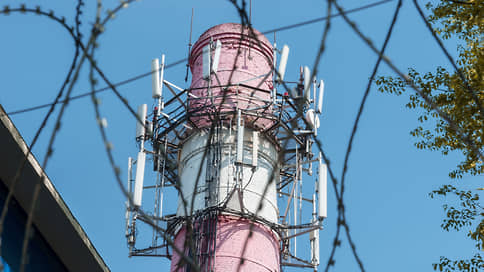By 2027, a system of dynamic operator access to frequencies may appear in the Russian Federation
[ad_1]

By 2027, Russia may have a system for dynamic access of mobile telecom operators to frequencies, which are also currently occupied by intelligence agencies. The mechanism is being developed as part of the preparation of a national project on the data economy. The mechanism, as experts explain, involves installing receivers that detect the activation of government or other priority communications in a specific location and give a command to civilian base stations to release this frequency range. Some market participants suggest that the implementation of the system will lead to non-transparent allocation of frequencies.
As part of the discussion of the national project for the development of the data economy until 2030 on the basis of the Digital Economy ANO, the expert working group “Data Transfer”, headed by the vice president for strategy of Rostelecom Boris Glazkov, proposed to work on a project for an automatic control system for the use of radio frequency spectrum (ACS RFS). As follows from the proposals of the working group (available to Kommersant), the introduction of a mechanism should solve the problem of “increasing spectrum shortage.” It is proposed to pay for the project from the fund for financing conversion activities.
The system of dynamic access to frequencies should allow security forces to turn off the radiation of radio electronics operators in a given location in exchange for access to the 3.4–3.8 GHz range, which is occupied by intelligence services in the Russian Federation, but is in demand by operators around the world for the development of the 5G communication standard. This idea appeared as part of the development strategy for the communications industry until 2035 (see Kommersant, June 29). Kommersant’s sources at that time suggested that the idea was being promoted by Rostelecom, which intended to become a single operator of the system. According to another interlocutor, one of the interested parties in the project is the Radio Research Institute, subordinate to the Ministry of Digital Development. The Kommersant Radio Research Institute stated that “they have been proposing the creation of such an automated system for many years” and “certainly can become its operator, since they have the necessary competencies in the field of radio frequency regulation.”
Currently, law enforcement agencies do not have direct access to operators’ network management systems, and services are limited through the Ministry of Digital Development. As a Kommersant source on the telecom market explains, the radio frequency control system can operate in two formats: manual shutdown of spectrum blocks (on command from law enforcement agencies) and dynamic shutdown (receivers are placed in regions that can detect the activation of priority communications, which gives a command to base stations immediately release this frequency range). For the second scenario, he explains, support should be implemented at the level of base stations, but in Russia it may not be available due to problems with licensing of foreign BS, and Russian manufacturers, according to him, were not given such a task.
The Ministry of Digital Development told Kommersant that this is one of the proposals of the expert group, “but it requires discussion with the industry and other interested departments.” “In general, we support improving radio frequency spectrum management practices,” the ministry said. ANO “Digital Economy” said that they are collecting proposals on the topic of the data economy. Rostelecom told Kommersant that they are not the author of this initiative, “this is a proposal from one of the members of the working group.” “Within the working group, implementation and financing were not discussed, including who would be the operator of the mentioned system,” Rostelecom emphasized.
The problem of a growing shortage of radio frequency spectrum really exists, VimpelCom noted. “We support the introduction of a dynamic access system,” they said. MegaFon also stated that it supports the project, adding: “Issues of organizing, managing and financing such a system can be resolved through various formats of partnership between government and commercial spectrum users.” MTS and Tele2 did not answer Kommersant.
A source in one of the operators noted that the sharing and dynamic management of radio frequencies can only be applicable for an extremely limited resource, currently the promising range of 3.4–3.8 GHz: “Extending the mechanism to other bands freed up during conversion and/or refarming will lead to unequal and non-transparent allocation of frequency resources.”
The key issue remains the financing of such a system. According to Kommersant’s interlocutor close to the government, there is currently no such fund for financing frequency conversion. In accordance with the “road map” of the Ministry of Digital Development, the conversion for 5G should affect the ranges of 2.3–2.4 GHz, 4.8–4.99 GHz and 24–29 GHz; the costs for this were estimated at 7.4 billion rubles. It was proposed to carry out the conversion at the expense of operators paying for frequencies. At the end of 2022, the state budget for conversion in 2023 was reduced by 1.75 billion rubles, for 2024 – by 1.45 billion rubles. A Kommersant source in the industry believes that most likely such a fund can be financed according to the model of a fund for a project to eliminate the digital divide in the regions: interested operators can contribute a percentage of revenue to it.
[ad_2]
Source link





